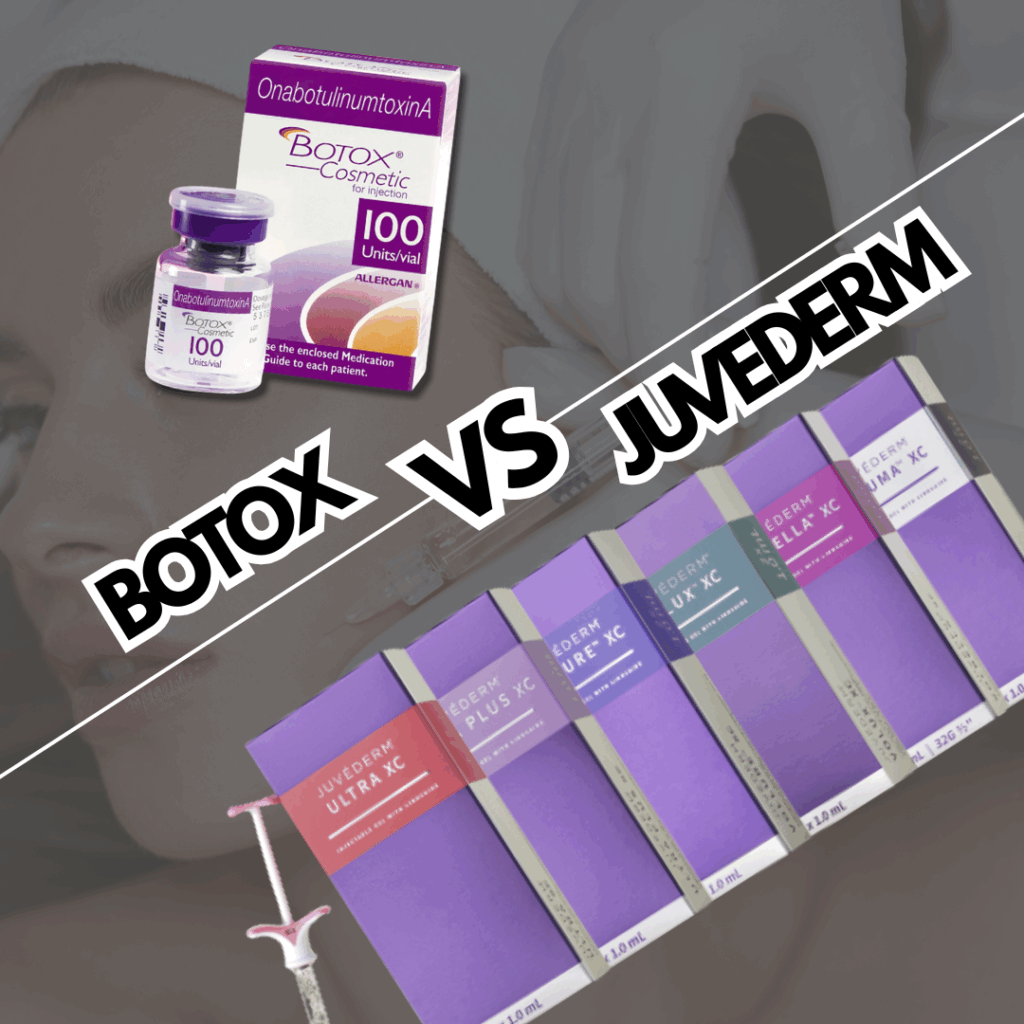
What is the Difference Between Botox and Juvederm?
The bottom line: Botox is a neuromodulator that relaxes muscles to smooth wrinkles caused by facial expressions. Juvederm is a hyaluronic acid dermal filler that adds volume to plump up lines and restore facial contours. They work completely differently and target different aging concerns.
You’re standing in front of your bathroom mirror, and those laugh lines seem deeper than yesterday. Your friend swears by Botox, but your sister raves about Juvederm. Sound familiar?
As a plastic surgeon, I get this question daily. Women walk into my office confused about which treatment they need. The beauty industry loves to lump these treatments together, but they’re as different as apples and oranges.
Let me break down exactly what each treatment does, so you know which one addresses your specific concerns.
1. How They Work: The Science Made Simple
Botox (Neuromodulator)
Botox works by temporarily blocking nerve signals to specific facial muscles. When those muscles relax, the wrinkles they create soften or disappear entirely.
Think of it this way: your forehead wrinkles form when you raise your eyebrows. Botox tells those muscles to take a break, so the wrinkles smooth out.
Juvederm (Hyaluronic Acid Dermal Filler)
Juvederm works by adding volume beneath your skin. It fills in lines and plumps up areas that have lost volume due to aging.
Picture a deflated balloon. Juvederm acts like air being pumped back in, restoring the balloon’s shape and smoothness.
2. What Problems Each Treatment Solves
Botox Targets Dynamic Wrinkles
These are wrinkles that appear when you make facial expressions:
- Forehead lines
- Crow’s feet around your eyes
- Frown lines between your eyebrows
- Bunny lines on your nose
Juvederm Addresses Volume Loss and Static Wrinkles
These are lines and hollows that exist even when your face is relaxed:
- Nasolabial folds (smile lines)
- Marionette lines (from corners of mouth to chin)
- Lip enhancement and definition
- Cheek volume restoration
- Under-eye hollows
3. Treatment Experience: What to Expect
Botox Procedure
The actual injections take about 3 minutes. You’ll feel tiny pinpricks, similar to small bug bites. Most patients describe it as completely tolerable.
Results appear gradually over 3-7 days as the muscles slowly relax. You’ll see full results in about two weeks.
Juvederm Procedure
Treatment time varies from 5-10 minutes depending on areas treated. Most Juvederm products contain lidocaine, so discomfort is minimal.
Results are immediate, though you might see some swelling for 24-48 hours. Once swelling subsides, you’ll see your final results.
4. How Long Results Last
Botox Duration
Results typically last 3-4 months. Some patients find results last longer with repeated treatments as muscles become trained to relax.
Juvederm Duration
Different Juvederm products last different amounts of time:
- Juvederm Ultra: 6-9 months
- Juvederm Voluma: up to 2 years
- Juvederm Vollure: up to 18 months
5. Side Effects and Downtime
Botox Side Effects
- Temporary bruising at injection sites
- Mild headache (rare)
- Temporary drooping if injected incorrectly (very rare with experienced injectors)
Most patients return to normal activities immediately.
Juvederm Side Effects
- Swelling (especially in lips)
- Bruising
- Temporary lumps or bumps
- Redness at injection sites
Swelling usually resolves within 2-3 days. Bruising fades within a week.
6. Cost Considerations
Botox Pricing
Botox is typically priced per unit. Most patients need 20-60 units depending on treatment areas. Prices vary by geographic location and provider experience.
Juvederm Pricing
Juvederm is priced per syringe. Most patients need 1-3 syringes depending on treatment goals and areas addressed.
Investment in either treatment should factor in the longevity of results and your satisfaction with outcomes.
7. Who Makes the Best Candidate
Ideal Botox Candidates
You’re a good candidate if you have:
- Dynamic wrinkles that bother you
- Realistic expectations about results
- No neurological disorders
- Not pregnant or breastfeeding
Ideal Juvederm Candidates
You’re a good candidate if you have:
- Volume loss in face or lips
- Static wrinkles or folds
- Realistic expectations
- No history of severe allergic reactions
Frequently Asked Questions
Q: Do Botox and Juvederm hurt?
Q: How do I know which treatment I need?
Q: Do I need to take time off work?
Q: How often will I need touch-ups?
Q: Do these treatments look natural?
Q: Are there any long-term effects?
Summary
Botox and Juvederm serve different purposes in facial rejuvenation. Botox relaxes muscles to smooth expression lines, while Juvederm restores volume and fills static wrinkles. Understanding the difference helps you choose the right treatment for your specific concerns.
Many patients benefit from combining both treatments for comprehensive facial rejuvenation. The key is working with an experienced provider who understands facial anatomy and your aesthetic goals.
Ready to determine which treatment suits your needs? Make a consultation to discuss your options and create a personalized treatment plan.
This article is meant for educational purposes. I am not your doctor, and it’s always best to see an actual plastic surgeon in consultation for the best options for you.
Don’t miss out on the future of aesthetic procedures.
Sign up for our newsletter to stay updated on the latest innovations!